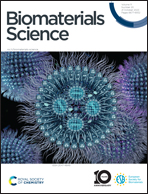Graphene- and MXene-based materials for neuroscience: diagnostic and therapeutic applications
Abstract
MXenes and graphene are two-dimensional materials that have gained increasing attention in neuroscience, particularly in sensing, theranostics, and biomedical engineering. Various composites of graphene and MXenes with fascinating thermal, optical, magnetic, mechanical, and electrical properties have been introduced to develop advanced nanosystems for diagnostic and therapeutic applications, as exemplified in the case of biosensors for neurotransmitter detection. These biosensors display high sensitivity, selectivity, and stability, making them promising tools for neuroscience research. MXenes have been employed to create high-resolution neural interfaces for neuroelectronic devices, develop neuro-receptor-mediated synapse devices, and stimulate the electrophysiological maturation of neural circuits. On the other hand, graphene/derivatives exhibit therapeutic applicability in neuroscience, as exemplified in the case of graphene oxide for targeted delivery of therapeutic agents to the brain. While MXenes and graphene have potential benefits in neuroscience, there are also challenges/limitations associated with their use, such as toxicity, environmental impacts, and limited understanding of their properties. In addition, large-scale production and commercialization as well as optimization of reaction/synthesis conditions and clinical translation studies are very important aspects. Thus, it is important to consider the use of these materials in neuroscience research and conduct further research to obtain an in-depth understanding of their properties and potential applications. By addressing issues related to biocompatibility, long-term stability, targeted delivery, electrical interfaces, scalability, and cost-effectiveness, MXenes and graphene have the potential to greatly advance the field of neuroscience and pave the way for innovative diagnostic and therapeutic approaches for neurological disorders. Herein, recent advances in therapeutic and diagnostic applications of graphene- and MXene-based materials in neuroscience are discussed, focusing on important challenges and future prospects.



 Please wait while we load your content...
Please wait while we load your content...